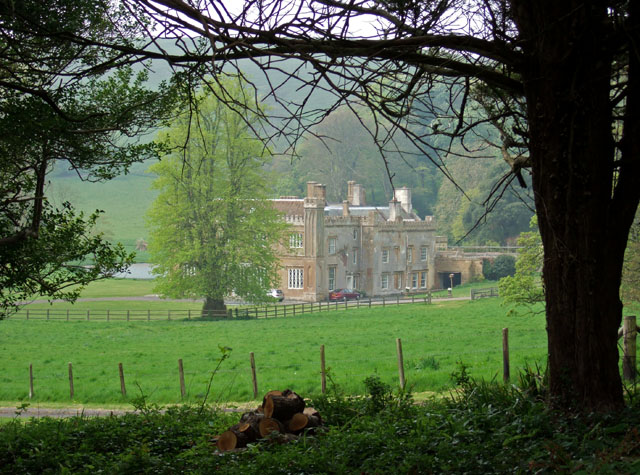The latest (and last) series of Broadchurch is currently
gracing our TV screens, and with it a new location – the scene of the rape
which forms the core of the latest investigation. The rape took place at a party in a manor
house called Axehampton House in the series, but in real life the house is the
privately owned Bridehead House.
Originally the Manor of Brydian, owned by Cerne Abbey from 987 until the
Dissolution, a new manor house was built on the site around 1600 by Sir Robert
Mellor. In the 19th century
the architect Benjamin Ferrey made substantial changes to the house on behalf
of his client Robert Williams of the Williams Deacon & Co bank.
The house, situated between Bridport and Dorchester, is
surrounded by the chalk hills of the Dorset Downs, at the head of the Bride
Valley. The lake seen in Broadchurch is fed
by the waters of the River Bride which gushes from nearby springs and tumbles
down a waterfall. Although the house
itself is private, there is a 5-acre site open to visitors, including the
Victorian Walled Kitchen and Flower Gardens and a series of walks.
Along with the revamped manor house, Ferrey built the estate
village of Littlebredy (bredy pronounced ‘briddy’) and he added a spire to the
14th century tower of the church of St Michael and All Angels. The church has a lovely carved font and in
the churchyard is a memorial to the former Bishop of Wellington, New Zealand,
Frederic Wallis, who returned to the UK to become Archdeacon of Sherborne. The attractive thatched village hall used to
be the village school. The area around
the village is dotted with signs of early occupation – stone circles, tumuli
etc. The National Nature Reserve known
as the Valley of Stones in the south of the parish was the source of building
material for many of these early constructions.
 | |
| Bridehead House from the Littlebredy road - geograph.org.uk - 415796. Photo by Mike Searle, via Wikimedia Commons. |
